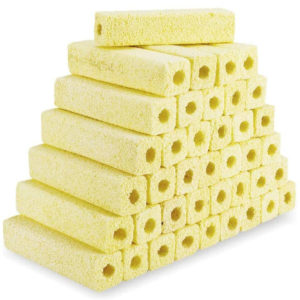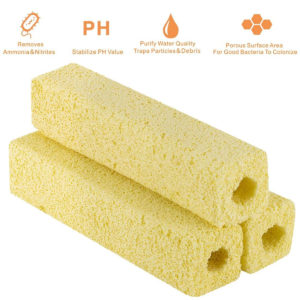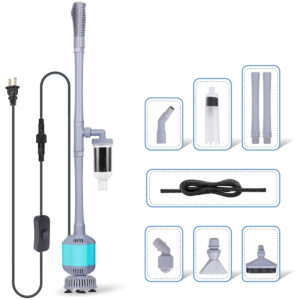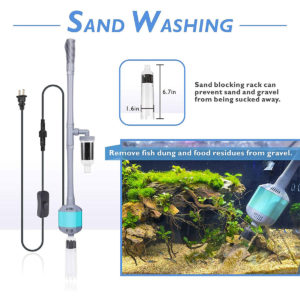How Does the Nitrogen Cycle Work in an Aquarium
Actually, the nitrogen cycle is a necessary part when setting up a new tank. To provide a clean and healthy living environment for your aquatic pets and keep them living happily, you’d better learn something about the nitrogen cycle, which is sometimes called “biological filtration”. So, if you are ready to dive deeper into the nitrogen cycle in aquariums, then let’s begin.
What is the nitrogen cycle
When it comes to the nitrogen cycle, the first question that comes into your mind can be – what is it? It is a process to reduce damage to your aquatic pets. As the build-up of fish feces, waste, debris, uneaten food, and decaying matter, ammonia and nitrogen will be produced. Once the concentration of ammonia and nitrogen is over 0.1 ppm, your fish may suffer death.
During the nitrogen cycle process, beneficial bacteria will be helpful to transfer the ammonia and nitrogen into nitrite, then convert the nitrite into nitrate, and finally turn into nitrogen gas with the help of anaerobic beneficial bacteria in aquarium water. However, too high a nitrate level is damaging to aquatic pets. Take ornamental fish as an example, they would lose colors and appetite. And algae would thrive in your tank.
Hence, regularly testing and changing your aquarium water is necessary. And make adjustments according to the test readings. For instance, adding activated carbon, water softeners, and ammonia neutralizers.
How important is the nitrogen cycle
In this segment, let’s talk about the importance of the nitrogen cycle in aquariums. Exactly, the nitrogen cycle is beneficial to decrease ammonia and nitrite levels. Too high levels of ammonia and nitrite will lead to toxic water, which is harmful to your fish. Seriously, fish will get sick or even die. Aside from that, without a great nitrogen cycle, some issues would appear in your tank, which is harmful to your fish. For example, the New Tank Syndrome and nitrite poisoning.
How does the nitrogen cycle work
To keep fish living happily in a healthy aquarium, the nitrogen cycle can be a necessary part, which makes sense in breaking down toxic aquarium waste and debris into harmless compounds. Commonly, there are four stages of the nitrogen cycle.
First stage – Ammonia formation
As fish waste accumulates, the ammonia will form in your fish tank. In new aquariums, the ammonia level will gradually increase after three days of introducing fish.
Second stage – Nitrite formation
At this stage, ammonia will be converted into nitrite with the help of nitrifying bacteria. While some nitrites will be turned into nitrogen gas with the help of denitrifying bacteria. Then, the ammonia level will be decreased, while the nitrite level gradually rise. Plus, in new aquariums, the nitrite level will increase after about one week of introducing fish.
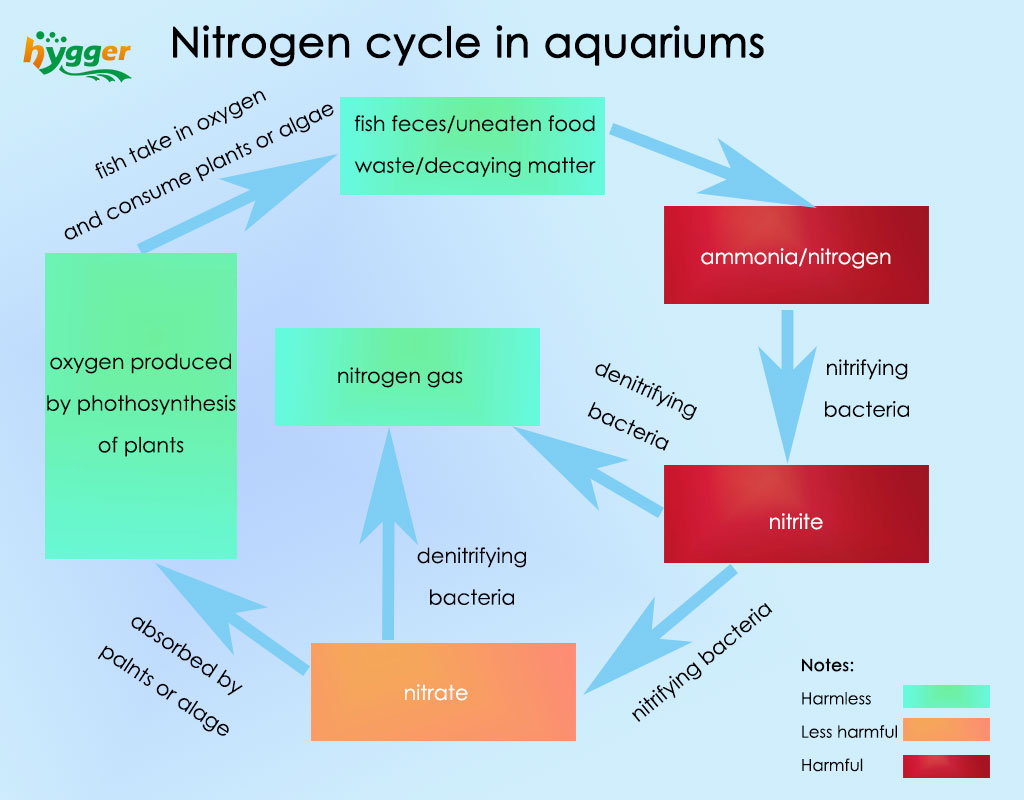
Nitrogen cycle in aquariums
Third stage – Nitrate formation
Other beneficial bacteria, like nitrifying bacteria, will help to transfer nitrite into nitrate. When the ammonia and nitrite levels approach zero, it means the nitrogen cycle approaches finished. Nonetheless, you should keep partial water changes to avoid too high a nitrate level. For example, change 10-30 percent of aquarium water once per week. In this case, a water changer will help you a lot, which makes your daily maintenance more convenient and time-saving.
Fourth stage – Breaking down nitrate
In addition to water changes, there are more methods to control nitrate levels. Denitrifying bacteria can break down the nitrate into nitrogen gas. Also, aquatic plants and algae will consume nitrate. As they grow up, they will produce oxygen, which is helpful to fish growth.
Nitrogen cycle steps
In general, the nitrogen cycle takes about 6–7 weeks without the help of special products. Next, we will share some tips about nitrogen cycle steps.
The first 2 weeks
During the first 2 weeks, you can only add a few fish. In the meantime, monitor the water closely. Test the water once every day. The ammonia level should be less than 0.06 ppm, while the nitrite and nitrate levels should be maintained at 0 ppm.
2–4 weeks
Monitor the water and check it once every other day. With the help of nitrifying bacteria, the ammonia level would be decreased to 0 ppm, while the nitrite level would increase. And it should be kept at less than 0.75 ppm. Also, the nitrate level should be maintained at 0 ppm. Besides that, in this period, you should provide sufficient oxygen level, which helps grow beneficial bacteria. Accordingly, harmful ammonia and nitrite accumulate slowly.
5–6 weeks
During 5–6 weeks, adequate oxygen level is also critically crucial. Without enough oxygen, the beneficial bacteria may develop slowly, while the harmful ammonia and nitrite would build up faster. Luckily, beneficial bacteria will convert the nitrite into nitrate. Nonetheless, the nitrite and nitrate levels respectively should be less than 0.75 ppm and 25 ppm. And the ammonia level should be 0 ppm.
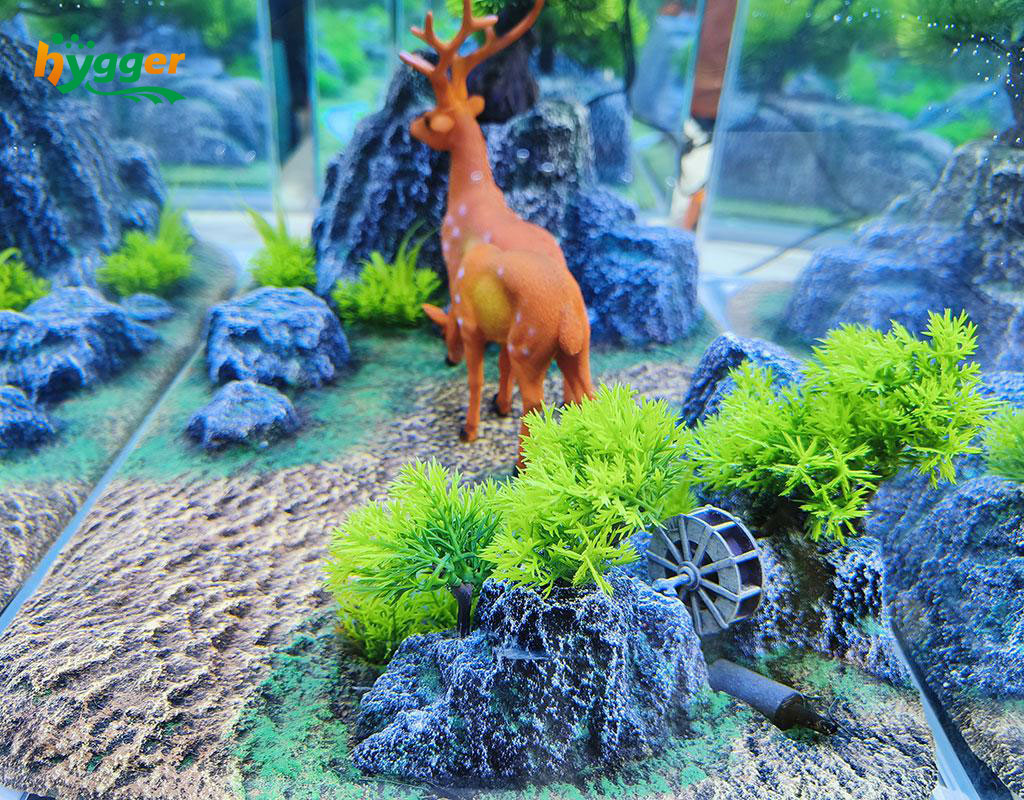
After 6 weeks
After 6 weeks, the nitrogen cycle is going to be stabilized and finished. In this case, the ammonia and nitrite levels in your tank should be at zero, while the nitrate level should be over 25 ppm. Then you can gradually introduce more fish into your tank. Plus, water testing is still vital. Commonly once each week.
What would happen if there was no nitrogen cycle?
You have to know the necessity of the nitrogen cycle in aquariums. Then, what would happen if there was no nitrogen cycle? New tank syndrome, ammonia stress, or nitrite poisoning will appear.
Specifically, fish suffering the New Tank Syndrome will lose colors and become inactive. And they will hide in corners or near the bottom of tanks. For more about the New Tank Syndrome, you can go to Solve The New Tank Syndrome Problem. Additionally, without a nitrogen cycle, the harmful ammonia will accumulate in your tank, leading to ammonia stress or even fish death.
To sum up
During the nitrogen cycle, monitoring the water, building a great filtration system, and providing sufficient oxygen levels can be key points. You should check the changes in water parameters at different periods. Also, filter media provide places for beneficial bacteria to grow. While adequate oxygen helps develop beneficial bacteria. Then the beneficial bacteria can break down harmful substances effectively.
That’s all for today. Have you walked away with a much better understanding of the nitrogen cycle in aquariums? For additional ideas about the nitrogen cycle in aquariums, welcome to share with us in the comment, we are happy to receive your sharing. Finally, thanks for taking the time, and we hope this article helps.

